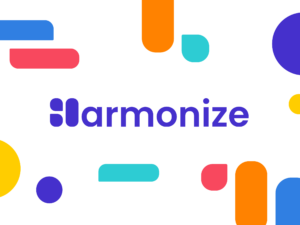
Harmonize is a media-rich online discussion tool that allows students to communicate, interact, and engage with one another through the Canvas integration. Harmonize encourages frequent and thoughtful engagement with course content, collaboration with other learners, and tools to help instructors facilitate vibrant online discussions. The tool can be used for fully online courses or as supplemental opportunities in face-to-face courses.
Harmonize allows instructors and students to:
- Upload multiple files directly within posts and easily record audio and video comments.
- Annotate images and video to provide feedback.
- View a single student’s responses across a post for easier grading.
Harmonize is a useful tool for interactive, inclusive, and organized online discussions. Explore Harmonize through the following teaching approaches:
- Facilitate fully asynchronous discussions
- Create a social space for community building
- Adopt open-ended, real-world, emotion-based prompts
- Provide students with the space to collaborate around shared research, inquiry, and knowledge building
- Encourage students to practice oral communication for language courses
- Use individual student boards as a space to prompt reflection to compile towards learning portfolios
- Set expectations and guide peer interaction by sharing community guidelines and discussion instructions
- Offer multi-modal ways to communicate (video, text, audio, images, etc.)
Harmonize is designed to:
- Increase student engagement in online learning environments
- Create social and inclusive learning environments
- Save time for instructors with grading and providing feedback
- Detect plagiarism and AI with the ChatGPT integration
- Offer multi-media options for student’s discussion posts
- Facilitate online polling
- Allow for student facilitation of online discussions
- Access qualitative and quantitative data on student posts
5 Star –
Harmonize ranks 5/5 stars for accessibility. To learn more about the accessibility review, contact otl@du.edu.
- Supports Text to Speech (TTS) such as NVDA, Jaws, or Voiceover
- Supports Speech to Text (STT) such as Dragon NaturallySpeaking or Voice Dictation
- Supports Alternative Input Experience/Keyboard Navigation
- Supports Screen Magnification and Color Contrast
Has an accessibility statement, contact support personnel, and a product team that can enhance accessibility
4 Ways to Improve Your Canvas Discussions with Harmonize from Harmonize on Vimeo.
Harmonize Resources Blog Getting Started with Harmonize – Student Resource GuideThis technology is not included with the University of Denver. Faculty, staff, and students may need to purchase a subscription. The technology may offer educational pricing with an “.edu” email address. Free trials or free accounts may also be available through the technology website.
- The University of Denver does not directly provide technical support. The Office of Teaching and Learning may consult on pedagogy.
- Submit a request for technical support from Harmonize directly.
Andresen, M. A. (2009). Asynchronous discussion forums: success factors, outcomes, assessments, and limitations. Journal of Educational Technology & Society, 12(1), 249-257. https://www.jstor.org/stable/pdf/jeductechsoci.12.1.249.pdf
Blackmon, S. J. (2012). Outcomes of chat and discussion board use in online learning: A research synthesis. Journal of Educators Online, 9(2), Retrieved from https://eric.ed.gov/?id=EJ985399
Green, R. A., Whitburn, L. Y., Zacharias, A., Byrne, G., Hughes, D. L. (2017). The relationship between student engagement with online content and achievement in a blended learning anatomy course. Anatomical Sciences Education, 11(5), 471-477. https://doi.org/10.1002/ase.1761

OTL Technology Rating
YELLOW technologies are not widely supported. DU may or may not have a 3rd party vendor security agreement for the use of these tools. However, some uses of this tool may be appropriate for teaching if certain conditions are met.
